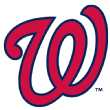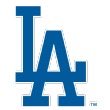Does postseason performance matter for impending free agents? It might, at least a little, although modern-day front offices are less prone to emotional buying based on small sample size performances. Does Joe Kelly get a three-year, $25 million contract with the Dodgers coming off a 4.39 ERA if not for his dominant run in October for the Red Sox? Probably not. Do the Red Sox re-sign Nathan Eovaldi to a four-year, $68 million if not for his clutch postseason pitching? He probably doesn't get $68 million.
Here are the top 10 notable free agents among the eight teams who participated in the division series this year.
Gerrit Cole, Houston Astros
The lowdown: After an absolute monster of a season in which he led the American League in ERA, strikeouts and FIP, Cole will head into free agency for his age-29 season poised to receive the largest contract ever for a pitcher. Right now, that belongs to David Price for the seven-year, $216 million deal he signed with the Red Sox in 2016. Compare Cole's two seasons before free agency to Price's:
Cole: 2.68 ERA, 412.2 IP, 285 H, 602 SO, 164 ERA+, 12.1 WAR
Price: 2.88 ERA, 468.2 IP, 420 H, 496 SO, 135 ERA+, 10.5 WAR
Price carried the bigger workload, but was also a year older. Cole trumps him in dominance and WAR. He's going to get a megadeal.
Most obvious fit: Cole grew up in Los Angeles, attended Orange Lutheran High School in Orange and then UCLA after declining to sign as a first-round pick out of high school. Every team can use Cole, of course, but if he wants to go back home, the Angels are desperate for a staff ace. Even the Dodgers could finally pursue the big free agent they haven't signed in the Andrew Friedman regime. And don't rule out the Astros -- although they are paying Justin Verlander $33 million the next two seasons and Zack Greinke $35 million the next two and should get Lance McCullers Jr. back from Tommy John surgery.
Anthony Rendon, Washington Nationals
The lowdown: Rendon should finish in the top three of the NL MVP voting after hitting .319/.412/.598 and leading the league in doubles and RBIs. He has hit .300 the past three seasons, walked nearly as often as he struck out and plays a good third base. He's also entering his age-30 season and we know teams have been reluctant to give the huge deals to players in their 30s. Still, compare Rendon's past two seasons to the final two for Bryce Harper and Manny Machado, last winter's big free agents:
Rendon: .314/.393/.567, 58 HR, 145 OPS+, 10.5 WAR (age 30)
Harper: .279/.401/.539, 63 HR, 143 OPS+, 5.9 WAR (age 26)
Machado: .278/.339/.505, 70 HR, 126 OPS+, 9.2 WAR (age 26)
The big difference isn't production and value, but age: Rendon is four years older. He won't get a 10-year, $300 million contract and did have some injury issues in college and early in his career, but a six-year deal running through his age-35 season sounds reasonable.
Most obvious fit: Aside from a return to the Nationals, how about a return to his home state of Texas? He's from Houston, but the Astros seem pretty set at third base. The Rangers, however, received a meager .699 OPS from their third basemen and could use a big star as they move into their new park.
Josh Donaldson, Atlanta Braves
The lowdown: After an injury-plagued 52-game season in 2018, Donaldson signed quickly with the Braves as a free agent, taking a one-year, $23 million contract and betting on himself to have a productive season and test free agency for the second straight offseason. He bet right. After a sluggish start, he turned it on in June and finished at .259/.379/.521 and his WAR ranked higher than teammates Ronald Acuna Jr. and Freddie Freeman at 6.1, close to his 2013 to 2017 average of 7.3 per season. That total is boosted by his best fielding metrics since 2014, however, as his offense -- after adjusting for a hitter-friendly environment in 2019 and his home park -- was down a notch from his MVP peak. A late bloomer, he'll be entering his age-34 season.
Most obvious fit: The Braves have a potential replacement in Austin Riley, who was forced into left field as a rookie but came up as a third baseman. Riley also struggled after a blazing start, with poor plate discipline that exposed some holes in his swing. Other than the Braves: How about division rival Philadelphia? With Maikel Franco getting most of the playing time, the Phillies ranked 24th in the majors with a .725 OPS at third base. Their lineup wasn't quite as imposing as hoped, and Donaldson's age means they could probably get him on a shorter-term deal.
Hyun-Jin Ryu, Los Angeles Dodgers
The lowdown: Ryu was a free agent last offseason and accepted the Dodgers' qualifying offer to return Los Angeles. He then had his best season, leading the majors with a 2.32 ERA and allowing no runs in 10 of his 29 starts. He averaged just 1.2 walks per nine innings. Under the rules of free agency, the Dodgers can't extend a qualifying offer again (although they can attempt to re-sign him). He'll be 33 and missed 2015 with shoulder surgery and all but one game in 2016 with an elbow injury.
Most obvious fit: It's not often that a team will let the majors' ERA leader walk without much of an effort to re-sign him, but consider the Dodgers' rotation options for 2020 (Rich Hill is also a free agent):
3. Kenta Maeda
4. Julio Urias
6. Tony Gonsolin
7. Dustin May
8. GERRIT COLE?
Maybe they can find a way to keep him on a shorter deal or maybe Ryu heads across town to the Angels or south to the Padres (assuming he wants to stay in California).
Marcell Ozuna, St. Louis Cardinals
The lowdown: Ozuna hit .263/.327/.452 in his two seasons with St. Louis -- solid production, but nothing like the huge season he had with the Marlins in 2017. He played through some injuries both seasons and hit just .219 in the second half of 2019, so that 2017 season now stands out as a fluke year. He's a solid defender in left (he won a Gold Glove as a left fielder), although shoulder issues have zapped his arm strength the past couple of years. He'll be entering his age-29 season.
Most obvious fit: White Sox outfielders hit a pathetic .252/.303/.385. Ozuna would provide a nice fit in a corner and could DH some to help prevent some of the injury issues. The Cardinals have top outfield prospect Dylan Carlson, who reached Triple-A in 2019, plus super-sub Tommy Edman can play the outfield, so they'll probably let Ozuna walk.
Didi Gregorius, New York Yankees
The lowdown: After averaging 24 home runs and hitting .277 from 2016 to 2018 with the Yankees, Gregorius missed the first half of 2019 after needing Tommy John surgery at the end of 2018. He returned to hit .238/.276/.441 in 82 games, although with 16 home runs. His fielding metrics have always been average at best, but fell to minus-6 defensive runs saved in his half-season. His arm strength seemed fine, but as he has become bigger and stronger, he may be losing range in the field. He'll be entering his age-30 season.
Most obvious fit: The Yankees can slide Gleyber Torres over to shortstop and install DJ LeMahieu as the full-time second baseman, so any money they spend in free agency is more likely to be directed at the rotation. There isn't an obvious fit here. Most of the teams that need a shortstop (Royals, Orioles, Marlins) are bad and rebuilding and teams may be concerned about his ability to stick at shortstop for more than a season or two.
Dallas Keuchel, Atlanta Braves
The lowdown: The 2015 AL Cy Young winner was looking for a big deal as a free agent last offseason and didn't get one, finally signing a one-year deal with the Braves in June and going 8-8 with a 3.75 ERA in 19 starts. He's a bulldog on the mound and the kind of leader you want in the clubhouse, but he doesn't have the velocity that teams covet these days, and he's had injuries in the past that limited him to 26 starts in 2016 and 23 in 2017. At 32, and with a career-worst 4.72 FIP, it's not like demand for him is suddenly going to increase (at least at his demands last offseason).
Most obvious fit: The Angels had a 5.64 rotation ERA, second worst in the majors. Are they going to continue wasting Mike Trout's best years? The Padres also could use a veteran presence and mentor for their young starters.
Jake Odorizzi, Minnesota Twins
The lowdown: Odorizzi went 15-7 with a 3.51 ERA in his second season in Minnesota, making 30 starts but pitching just 159 innings as the Twins kept him a tight workload (he pitched more than six innings just twice). Odorizzi has averaged 30 starts a season since 2014 and is coming off a career-high strikeout rate and his first All-Star appearance. He'll be 30 years old and is a fly ball-heavy pitcher, so park factors are an important consideration here.
Most obvious fit: The Twins. Fellow starters Kyle Gibson and Michael Pineda (who missed the postseason after being suspended late in the season after a positive test for a banned diuretic) are also free agents, so the Twins' front office has some work to do.
Edwin Encarnacion, New York Yankees
The lowdown: Encarnacion had a busy year, getting traded from Cleveland to Seattle in the offseason and then from Seattle to the Yankees in June. He missed most of the final two months with an oblique injury, but bashed 34 home runs in 418 at-bats. He's hit just .246 and .244 the past two seasons, but draws enough walks that he posted a .344 OBP. He has a $20 million team option, but the Yankees will probably exercise a $5 million buyout, making him a free agent. He'll be 37 and did start 57 games at first base, but he's best suited for a designated hitter role.
Most obvious fit: As bad as the White Sox outfielders were, their DHs were even worse, hitting .208/.285/.362. Yuck. Given the limited interest in DHs these days on the free-agent market, Encarnacion won't cost much and would give the White Sox a nice upgrade.
Avisail Garcia, Tampa Bay Rays
The lowdown: Non-tendered by the White Sox after a 0.3-WAR season in 2018, the Rays signed him to a one-year deal as a platoon option in the outfield, but injuries opened up some playing time, and he produced a 2.0-WAR season. He hit .282/.332/.464. He doesn't walk much and doesn't lift the ball in the air enough to take advantage of his raw power, so his offense is heavily predicated on BABIP (very high in 2017, when he hit .330; low in 2018 as he hit .236; and a high .340 in 2019).
Most obvious fit: The five teams with the worst production from their corner outfielders: Marlins, White Sox, Giants, Diamondbacks, A's.
Other free agents:
Astros: Wade Miley, Will Harris, Joe Smith, Hector Rondon, Collin McHugh, Martin Maldonado
Yankees: Brett Gardner, Dellin Betances, Cameron Maybin, Austin Romine
Rays: Travis d'Arnaud, Eric Sogard
Twins: Kyle Gibson, Michael Pineda, Jonathan Schoop, Jason Castro, Sergio Romo (Nelson Cruz has a $12 million team option)
Braves: Julio Teheran ($12 million team option/$1 million buyout), Nick Markakis ($6M/$2M), Tyler Flowers ($6M/$2M), Billy Hamilton ($1M buyout), Francisco Cervelli, Darren O'Day, Chris Martin, Brian McCann, Adeiny Hechavarria, Josh Tomlin, Matt Joyce, Jerry Blevins
Cardinals: Adam Wainwright, Michael Wacha, Matt Wieters
Nationals: Adam Eaton ($9.5 and $10.5 million team options for 2020 and 2021), Ryan Zimmerman ($18M/$2M), Yan Gomes ($9M/$1M), Sean Doolittle ($6.5M club option), Howie Kendrick, Brian Dozier, Fernando Rodney, Asdrubal Cabrera, Gerardo Parra, Daniel Hudson, Jeremy Hellickson
Dodgers: Rich Hill, Russell Martin, David Freese, Jedd Gyorko ($1M buyout)








